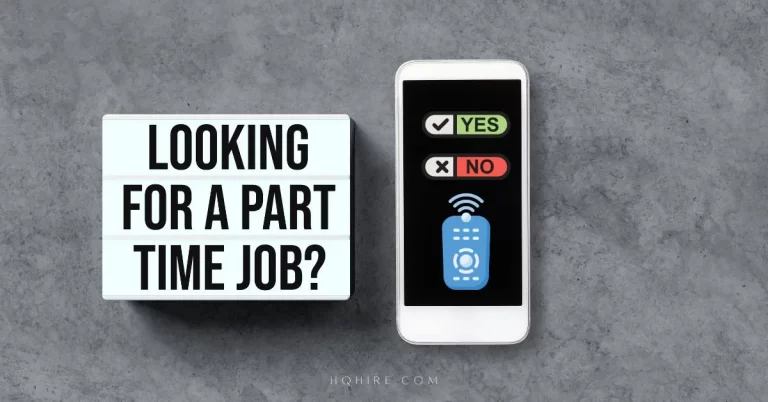Communication challenges have long been a part of traditional, office-based working environments, and remote work is no different.
With the rising popularity of remote and hybrid work, there are a number of new remote working communication challenges that need to be addressed.
KEY TAKEAWAY
- Diverse communication challenges in remote work, include miscommunication, feelings of disconnection, and collaboration issues.
- Challenges can be overcome with implementing strategies for effective communication such as customizing communication tools, encouraging real-time collaboration, and democratizing informal communication to foster a sense of connection.
- Key is to address cultural differences, language and cultural barriers in remote teams, this emphasizes the need for tolerance, open communication, and workplace practices modification to accommodate diversity.
Why Do You Need to Overcome Remote Work Communication Challenges
Overcoming remote work communication challenges can prevent miscommunication, feelings of disconnection, and bridging the gap to create a sense of trust that build relationships between remote employees.
With the absence of facial expressions and body language effective remote team communication is key to building a high performing remote team.
7 Common Remote Work Communication Challenges While Working from Home
Biggest challenges of remote or hybrid teams is establishing effective communication channels that ensure that everyone understand one another.
Exploring creative ways to communicate while working from home can help foster a remote working experience that is productive and enjoyable for you, your colleagues, your clients, and your boss.
Let’s take a look at the few communication challenges for remote workers, and how to overcome them with best practices for remote teams to work.
1. Miscommunication
Miscommunication is a failure to communicate thoughts, ideas, and concepts clearly. The problem is often a two-way street and it often includes a failure to understand what is trying to be communicated.
Miscommunication can be caused by a few reasons:
- Poor communication skills on the part of one or more employees
- Failure to clarify expectations
- Failure to break down the flow of information.
Whatever the cause, miscommunication can lead to frustration, confusion, and even conflict. In some cases, it can even have a negative impact on the bottom line.
Miscommunication while working from home
Miscommunication is more prone to occur if you are not communicating face-to-face.
While working from home, most workers communicate through emails, chats, text messages, and project management and collaboration software.
The lack of face-to-face communication can be problematic because a lot of effective communication relies on non-verbal cues that are difficult to quickly and effectively convey with the written word.
How to solve miscommunication
The best way to address miscommunication is to make the technology work for you. Rather than using a catch-all form of communication for all your business needs, customize your communication to the task.
Communication technology available to remote workers:
- Use video calls for brainstorming activities, collaborations, and meetings
- Pre-record videos for training and seminars
- Use email to communicate long-winded and complex ideas
- Use project management software to keep track of what team members are working on and their progress in completing their assigned tasks
If you go as far as providing a set of guidelines for your company’s communication policies and procedures, you will be able to eliminate miscommunication altogether.
2. Remote communication and collaboration
When working from home it can be hard to connect and bond with your colleagues. This is particularly problematic when camaraderie or rapport between team members helps foster productive communication, lowers stress, improves service, and makes work something that people enjoy doing every day.
Without the chance to bond over lunch or during a water-cooler chat, remote communication is a challenge.
How to make remote communication and collaboration more productive
Encourage and ensure that your team members and collaborators work to similar schedules and access to real-time communication tools such as Skype, Zoom, Microsoft Teams, and Slack.
3. Feelings of disconnection
When you work from home, especially if you spend most of the day with only yourself for company, feelings of disconnection and alienation can make communication difficult. This can be exacerbated when some of the team members work in the office with others and some work remotely.
No one wants to be left out of inside jokes or feel like they’re not a wanted or valued member of the team because they don’t work in the same space as their colleagues.
How to reduce feelings of disconnection
There are many ways to reduce employees’ feelings of disconnection. For example, you can encourage all members of the team to communicate in informal ways through programs such as Slack or Google Hangouts. The key is to democratize communication so that everyone has access to it and no one is left out.
You can also encourage regular in-person catch-up sessions out of work hours at the pub or a café. If this is not possible, you can create your own online activities like a trivia competition or a fantasy football syndicate and make working from home fun.
4. Problems may arise when collaborating with a remote team
When team members fail to communicate or participate effectively in workplace conversations, collaboration becomes a hindrance rather than a tool for success.
This is not just true for activities such as brainstorming sessions, but also in providing constructive feedback.
When employees have problems collaborating effectively, the issue is often the symptom of a larger problem such as feeling undervalued, rather than poor communication.
According to Harvard Business Review, when employees feel undervalued at work, they:
- Don’t feel part of the team
- Allow self-doubt to cloud their decision-making
- Are less likely to ask for feedback or help completing a task
- Are less likely to communicate effectively
How to solve problems when collaborating with a remote team
Encourage communication where all team members are allowed to talk about non-work hobbies, family life, or their plans for the weekend. This will help develop bonds between colleagues and strengthen feelings of worthiness.
It can be difficult to get stubborn or introverted team members to communicate more to foster stronger collaboration, so it might also be worthwhile to engage the human resources manager to intervene.
5. Working from different regions or time zones
When we have the ability and technology to work from home, ‘home’ can be anywhere in the world. There’s no denying that this freedom is, for many, one of the greatest advantages of working from home.
Unfortunately, when your team members work in different time zones, your team might find it hard to get in sync. This makes it difficult to get together and get the task done.
How to communicate to coworkers in different regions and time zones
Organizing a schedule where everyone knows when everyone is working is a great place to start. Not only will you be able to plan for collaboration when everyone is online and working, but you can try to accommodate everyone’s needs as much as possible.
Having a set of company-wide guidelines will allow all team members to know what is expected of them and should provide strategies to make remote working a productive and positive experience.
Remote working is great for the freedom of where you work, but not at the expense of productivity or communication. Balance is key.
6. Dealing with language and cultural differences
If your remote workers live in different countries around the world, having a team of people with different cultural and linguistic backgrounds brings a wonderful mix of experiences to the team.
However, it can also cause challenges in communication due to language barriers and different cultural norms.
Language barriers to communication
If you have team members whose native language is not the dominant one spoken in the workplace, it is important that everyone is aware that there will be misunderstandings and miscommunications. They must also know that it is inappropriate for anyone’s language limitations to be called out in public or ridiculed.
The best way to mitigate language barriers is to talk clearly, simply, and without slang or jargon. It’s also a good idea to write everything down in an email so the recipient has it as a reference document.
Cultural barriers to communication
Workplace expectations vary between countries and cultures, and what is appropriate behavior in one culture – for example correcting a senior manager – might be taboo in another.
These differences can affect remote teams by:
- Impacting the way your team communicates and works together
- Contributing to miscommunications, misunderstandings, offenses, and disagreements
Research from the Academy of Management shows that businesses need to actively address cultural differences in order for them to be advantageous to productivity and morale rather than a detriment.
The key is understanding that cultural differences are not a problem as long as workplace practices are modified to accommodate them.
A great way to start is by promoting tolerance of cultural, religious, and political differences. Workplaces also need to be aware of situations where offense might be caused and should be avoided through open communication and pre-planning.
7. Introvert personality types
Very often, people who thrive in remote jobs, or who prefer to work from home, are introverts who are not comfortable interacting with others. This includes all forms of communication but speaking in person or on the telephone can be particularly challenging.
How to work with introvert personality types
A progressive workplace will actively leverage its workers’ personality traits rather than try to mitigate them. This is so that they can benefit from the range of working styles, behaviors, and preferences of the employees.
Workplaces need to implement strategies and procedures to cater to introvert types. For example, workplaces can:
- Organize small group chats or brain-storming sessions rather than large group gatherings
- Allow for thinking time during group sessions
- Provide a pre-meeting agenda
- Allow workers to set their working status to ‘unavailable’ or ‘not to be disturbed’ when needed
- Ask workers how they would prefer to communicate and accommodate them as much as possible
Best Practices to Overcome Communication Challenges for Remote Workers
Having managed many remote teams, there is a few best practices you need to follow to overcome communication challenges.
Effective communication is the backbone of a successful remote team, ensuring tasks are completed efficiently and everyone feels connected.
1. Embrace Asynchronous Communication
Leverage the power of asynchronous communication to accommodate diverse work schedules.
- Encourage team members to provide updates and insights at their own pace.
- Foster a balance between productivity and flexibility.
- Empower your team members to make decisions.
2. Strategic Use of Project Management Tools
Dive deep into the arsenal of project management tools. Beyond the basics, explore features that promote collaboration:
- Interactive Gantt charts.
- Kanban boards.
- Project management software
Tailor the toolset to your team’s unique needs, ensuring seamless tracking and transparency.
3. Cultivate a Virtual Water-Cooler Vibe
Remoteness shouldn’t equate to isolation. Establish virtual spaces for casual interaction, mirroring the water-cooler moments of a traditional office.
Whether it’s a designated chat channel for non-work discussions or virtual coffee breaks, these informal connections foster a sense of camaraderie.
4. Personalized Communication Guidelines
One size rarely fits all, especially in remote communication.
- Develop personalized communication guidelines that align with the nature of tasks.
- Reserve synchronous communication for collaborative brainstorming via video calls, while utilizing email for in-depth discussions.
Tailoring your approach minimizes miscommunication.
5. Scheduled “Focus Time” Blocks
Recognize the value of uninterrupted focus.
Encourage team members to schedule “focus time” blocks, signaling periods when they’re fully immersed in tasks.
This not only enhances individual productivity but also communicates the importance of dedicated, distraction-free work.
6. Interactive Training and Development Sessions
Move beyond conventional training approaches.
Introduce interactive elements into virtual training sessions,
- Set up live Q&A sessions
- Create breakout groups
- Create gamified learning modules.
This not only enhances engagement but also mirrors the collaborative spirit of in-person training.
7. Global Perspective Inclusivity
Embrace and celebrate the diverse cultural and linguistic backgrounds within your team.
Implement language-agnostic communication practices, avoiding colloquialisms and jargon.
A multilingual team should feel heard and understood, fostering an inclusive and harmonious working environment.
Bonus: Wellness Check-ins
Prioritize the well-being of your team by integrating regular wellness check-ins.
These can be casual, non-work-related conversations focused on understanding how each team member is coping. It’s a subtle yet impactful way to reinforce a supportive team culture.
Strategies to Improve Remote Work Communication
With many people choosing to work from home and the proliferation of remote workplace communication technologies,
Today’s modern workplace offers many solutions to improve remote work communication, human resources managers, and employees can easily implement strategies to improve communication effectiveness.
- Use technology such as instant messaging to make it easy for employees to communicate informally with coworkers while working.
- Avoid scheduling too many meetings and allowing downtime between them.
- Checking in regularly so support will be provided when required.
- Creating strategies to promote small talk and build rapport in the remote team.
- Ensuring that employees feel valued by acknowledging employees and allowing the employees to voice their opinion when opportunities arise.
Oftentimes, remote workers feel isolated, communication tools, such as text communication through emails, video and audio communication through video conferencing and chat software, help to combat this and keep team members connected.
Good communication can help to create a positive work environment, even when employees are not in the same location.
Why Effective Communication is Important When Working From Home?
Effective communication is important whether you work from home or not, as a clear communication helps to ensure that all work is completed, and tasks are completed efficiently and on time.
Thus, it is important that you know what challenges you will be facing and implement strategies that can help you overcome your challenges.
Read Also:
- How to Write a Professional Email At Work (with Examples)
- How to Reply to a Meeting Invitation Request (with Examples)
- 23 Email Etiquette: Professional Communication in Remote Workplace
- How to Do Online Meeting Follow-Up [+12 Follow-Up Meeting Email Templates]
- How to Boost Engagement During Online Meetings During (5 Meeting Engagement Strategies)
Join over 11,000+ achievers who are committed to achieving their career goals!






